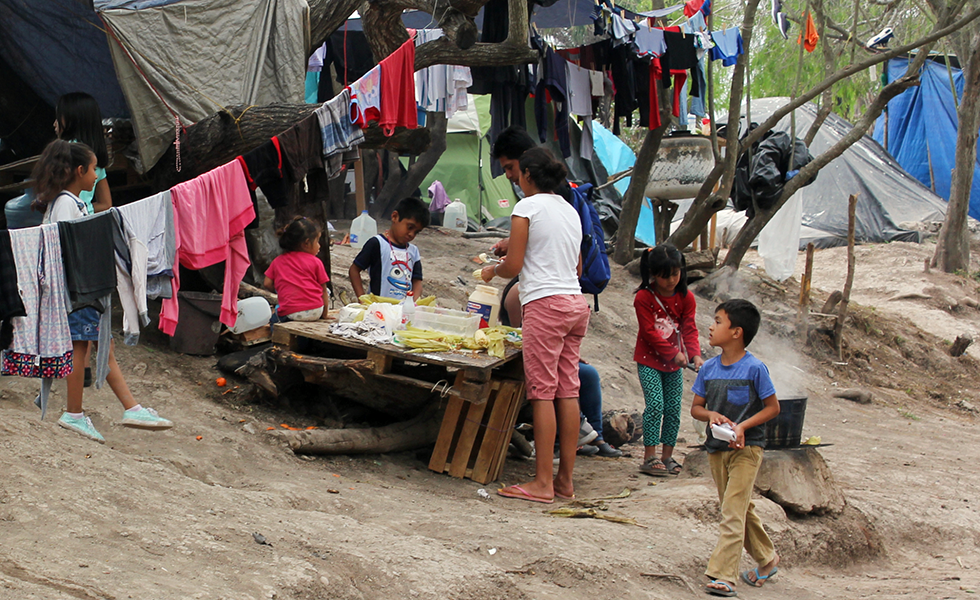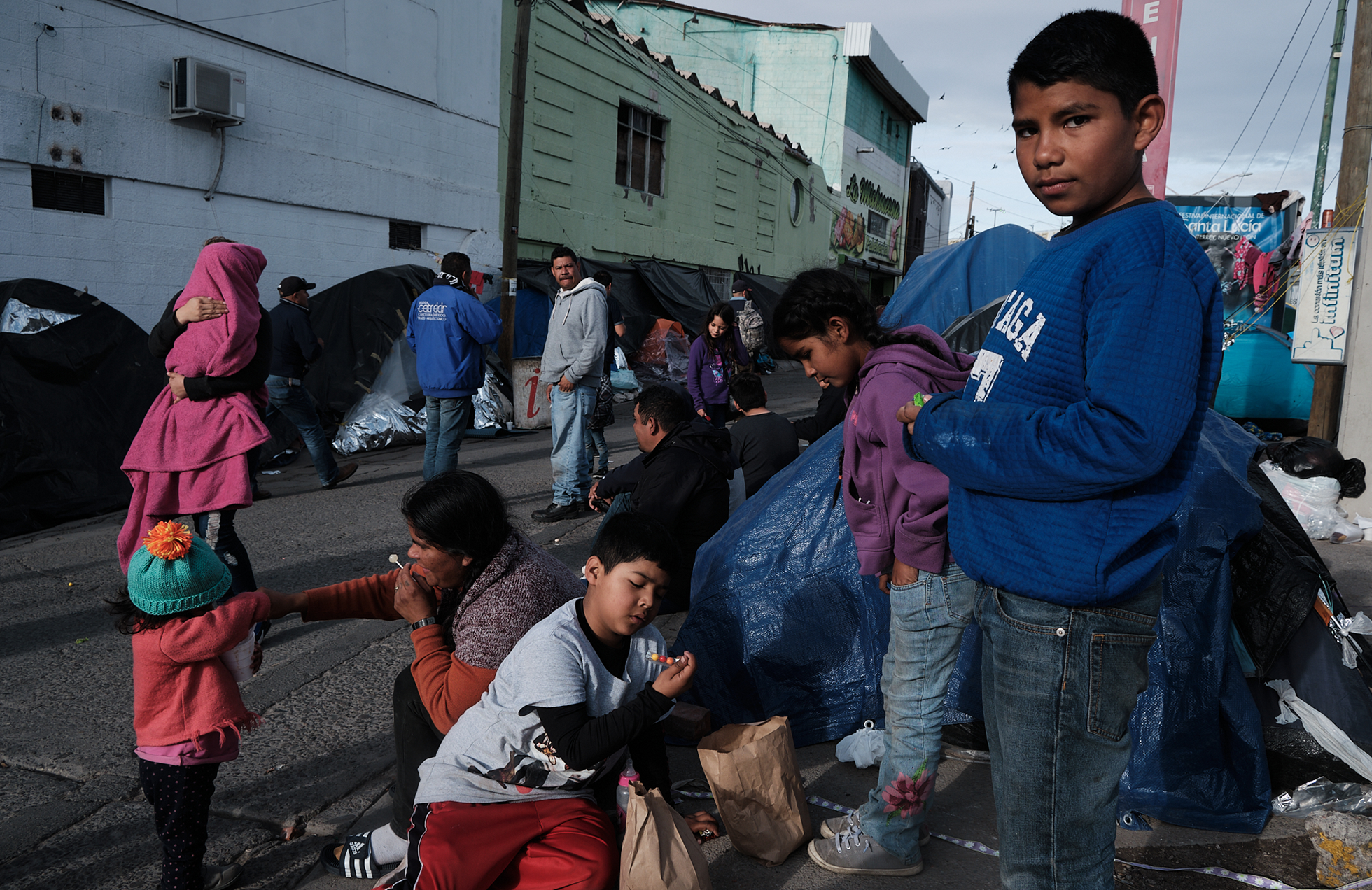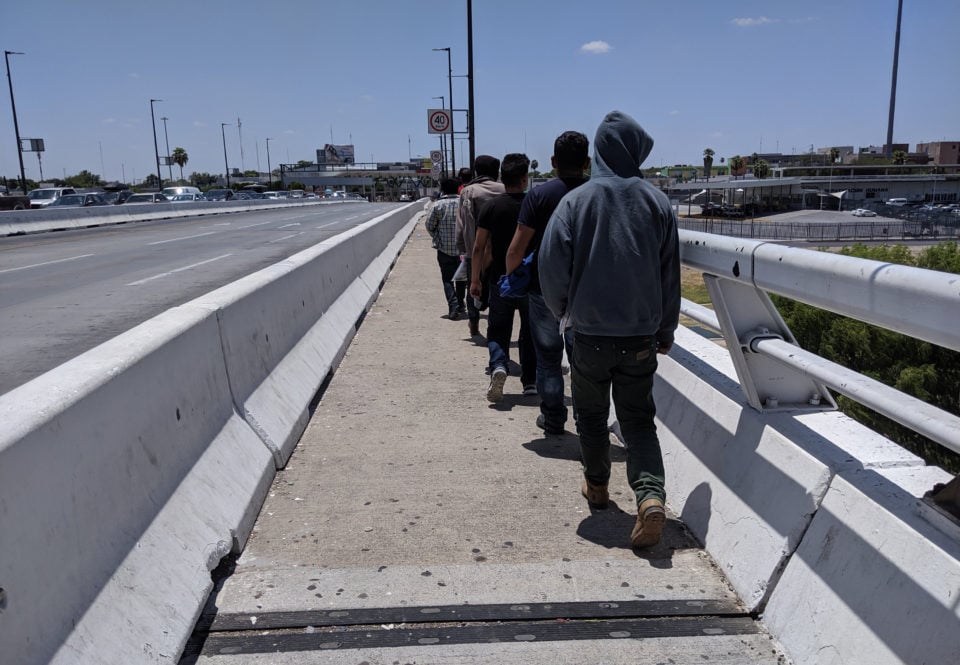
In Nuevo Laredo, Trump’s ‘Remain in Mexico’ Program Feels Chaotic and Dangerous
It’s also kind of working.

Above: Migrants returning to Nuevo Laredo under the Migrant Protection Protocols.
Under a blistering noon sun, dozens of migrants from all over Latin America file south along a bridge to the Mexican border town of Nuevo Laredo, carrying nothing but plastic baggies full of documents and the clothes on their backs. Weeks or months before, the migrants had left their home countries for the United States where most hoped to attain asylum. Instead, after crossing into the U.S. from Mexico, they spent days in frigidly cold Customs and Border Protection (CBP) holding facilities, where agents stripped them of their belts, shoelaces, jewelry, and extra clothing. They were then given a date for an immigration hearing, roughly two months out, and sent back across to Mexico to wait for their court dates in the dangerous, unfamiliar city of Nuevo Laredo. The scene, which I witnessed Monday, was the result of President Donald Trump’s “Remain in Mexico” policy, known officially by its Orwellian moniker the Migrant Protection Protocols (MPP).
First launched in California in January before expanding to El Paso in March and to Laredo and Brownsville earlier this month, MPP is Trump’s most successful broadside yet on America’s asylum status quo: Under the program, more than 20,000 migrants have been returned to Mexican soil to await hearings in U.S. immigration courts—an unprecedented offloading of responsibility onto our poorer, deadlier neighbor to the south. Unlike many of Trump’s immigration gambits, the courts are letting MPP remain in force as its legality is challenged. (A Ninth Circuit hearing is scheduled for October.) While unaccompanied minors are spared, families and pregnant women are generally subject to MPP. Exceptions for those who fear for their lives in Mexico are limited and hard to obtain. Africans and other non-Spanish speakers, along with Mexicans, are generally excluded from MPP.
On Monday, after the group of rejected migrants left the bridge, they made their way to an encampment of their peers who’d been turned back in previous days. Next to a nearby Mexican migration office, about 100 stood chatting in groups or lounged on a smattering of black foam mattresses laid out on the concrete. Babies slept in their mothers’ arms. A toddler in nothing but a diaper wandered about.
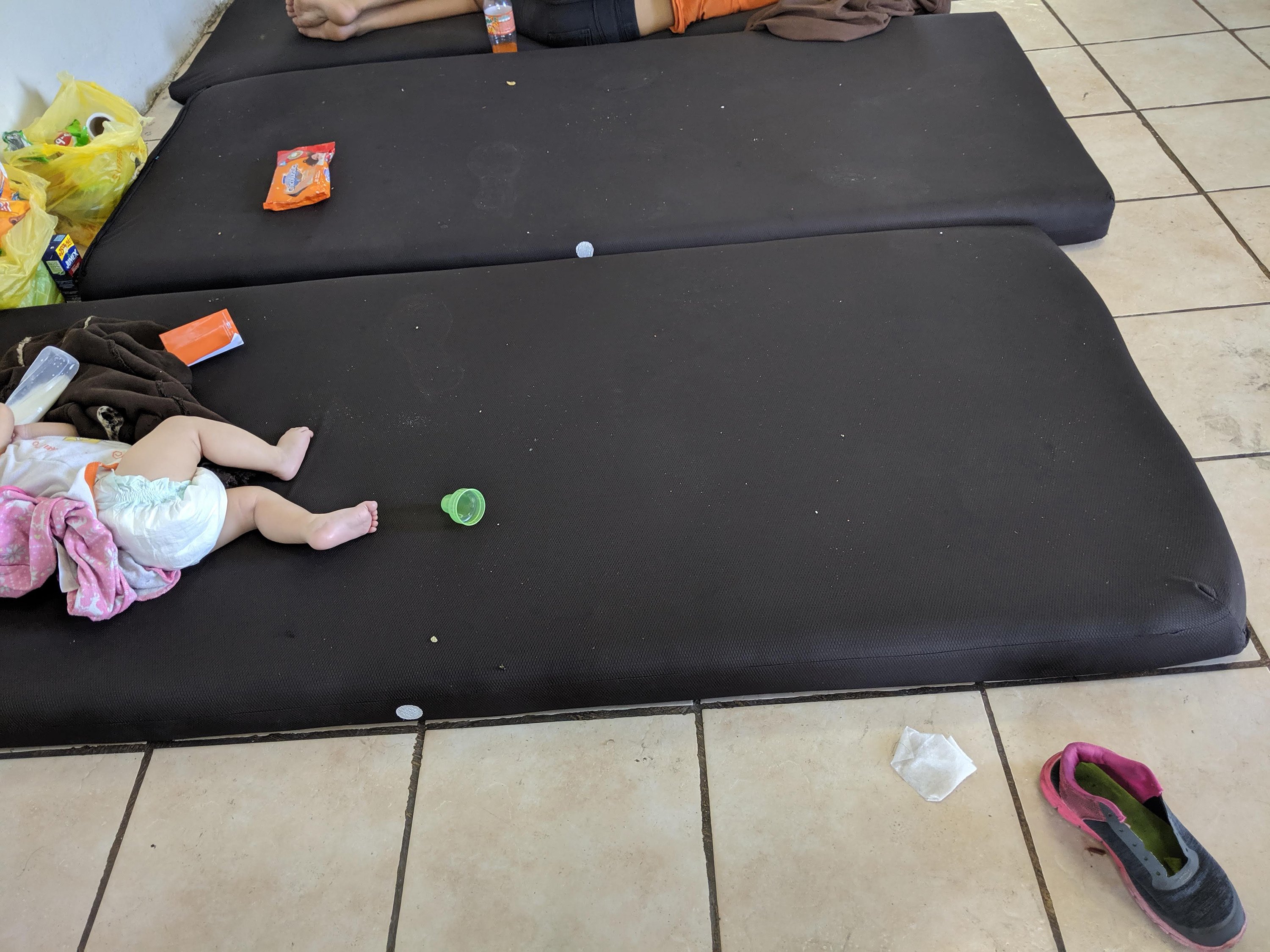
With the new arrivals, their numbers swelled to some 300. The crowd included Guatemalans, Hondurans, Salvadorans, Nicaraguans, Venezuelans, and Cubans. It included both those who had crossed the river illegally and those who had spent months already waiting on the Mexican side, thanks to a separate U.S. policy known as “metering,” in order to apply for asylum properly at the bridges. It also included those who had crossed in other Mexican border towns: Matamoros, Reynosa, and Ciudad Miguel Alemán.
Many were shocked at their misfortune. “It’s a human rights violation what they’re doing,” said one Salvadoran father who’d come with his 9-year-old daughter. “It’s a farce; it’s a joke that the gringos are playing on us,” said a Honduran mom. Some had been there five days without leaving the area, for fear of a city where targeted violence and kidnapping of migrants abound. Doctors Without Borders, which works in the city, recently said that “asylum seekers in Nuevo Laredo are constantly exposed to robbery, assault, extortion, kidnapping, and homicide.” But many, despite the setback, were determined to pursue their asylum claims.
“The new adjudication process set up under the ‘Remain in Mexico’ program is a sham; it is not intended to adjudicate claims but rather to exclude and deny asylum.”
Sofia, a 30-year-old Guatemalan who came with her 8-year-old daughter and—like other migrants I spoke with—requested a pseudonym, broke into tears moments into our conversation. “I came here to save the life of my daughter, but they returned us here anyway,” she said, before describing gang persecution her family had faced in her home country. Sofia, who crossed the river before turning herself in to Border Patrol to request asylum, vowed to stay in Mexico, find whatever work she could, and fight her case. All the Nicaraguans, Venezuelans, and Cubans that I spoke with said they’d persevere, too.
For these asylum-seekers, MPP presents a logistical nightmare. The ones I spoke to had court dates ranging from late September to late October, outpacing the 45-day timeline that the government originally promised. When their time finally comes, they must return to the Nuevo Laredo bridge—some having to get there as early as 4:30 in the morning—and then they’ll have hearings by video in a new tent facility on the U.S. side of the Rio Grande. After that, they may have to come back for further hearings. Immigration attorneys say preparing cases in these conditions will be nigh impossible, arguing that many lawyers can’t or won’t go to Nuevo Laredo, where the State Department warns against all travel, and that limited access to technology will keep migrants from compiling and providing the proof necessary for a strong case.
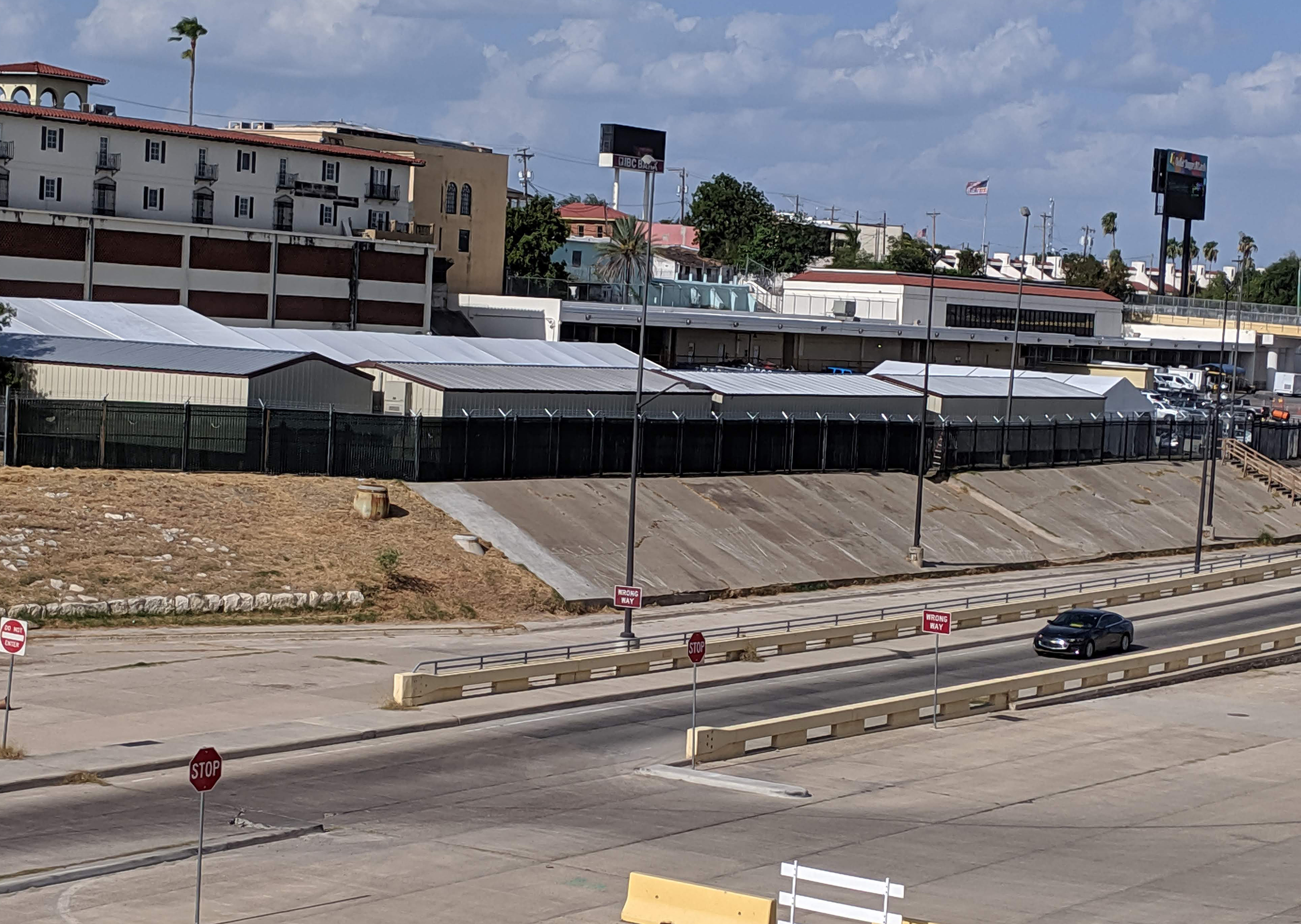
“It is hard to conceive of a worse place from which asylum seekers could be required to marshal evidence and prepare their legal claim,” said Daniel Berner, an Austin immigration attorney, who briefly visited Nuevo Laredo earlier this month. Denise Gilman, director of the University of Texas at Austin’s immigration clinic, argues the difficulty is the point. “The new adjudication process set up under the ‘Remain in Mexico’ program is a sham; it is not intended to adjudicate claims but rather to exclude and deny asylum,” she said.
Some migrants, indeed, are already giving up. Multiple Central American families I spoke with told me that, rather than brave Mexico, they planned to return to their countries. The Texas Tribune spoke to numerous Central Americans last week who said the same. The families had hoped to be released quickly to live with relatives in the United States, where they could work while they awaited their court dates, even if they eventually lost their cases; now, they’d been deterred. A number of young Central American men, who had been caught trying to sneak through illegally and never intended to apply for asylum, also said they’d return home now. For them, their court dates were a joke: They would never appear, and one Honduran man who wasn’t going home said he was just going to try sneaking through again. (Two Hondurans claimed they had tried applying for U.S. work visas back home but had been denied.)
In a new twist, Mexican immigration authorities are offering to transport returned migrants from Nuevo Laredo to the larger city of Monterrey, some three hours south. According to the Associated Press, busloads of migrants are being dropped off there without money, leads on work, or a place to stay. Those migrants are now even farther from the courts they must return to, and it’s not clear how long the policy will last. Still, the vast majority of people I talked to were planning to go there—whether en route to their home countries or to pass the time until their court dates—because they considered Nuevo Laredo more dangerous. Mexican detainees or CBP agents in the holding facilities had warned them about the place. While Monterrey actually has the higher homicide rate, in Nuevo Laredo, migrants are especially targeted.
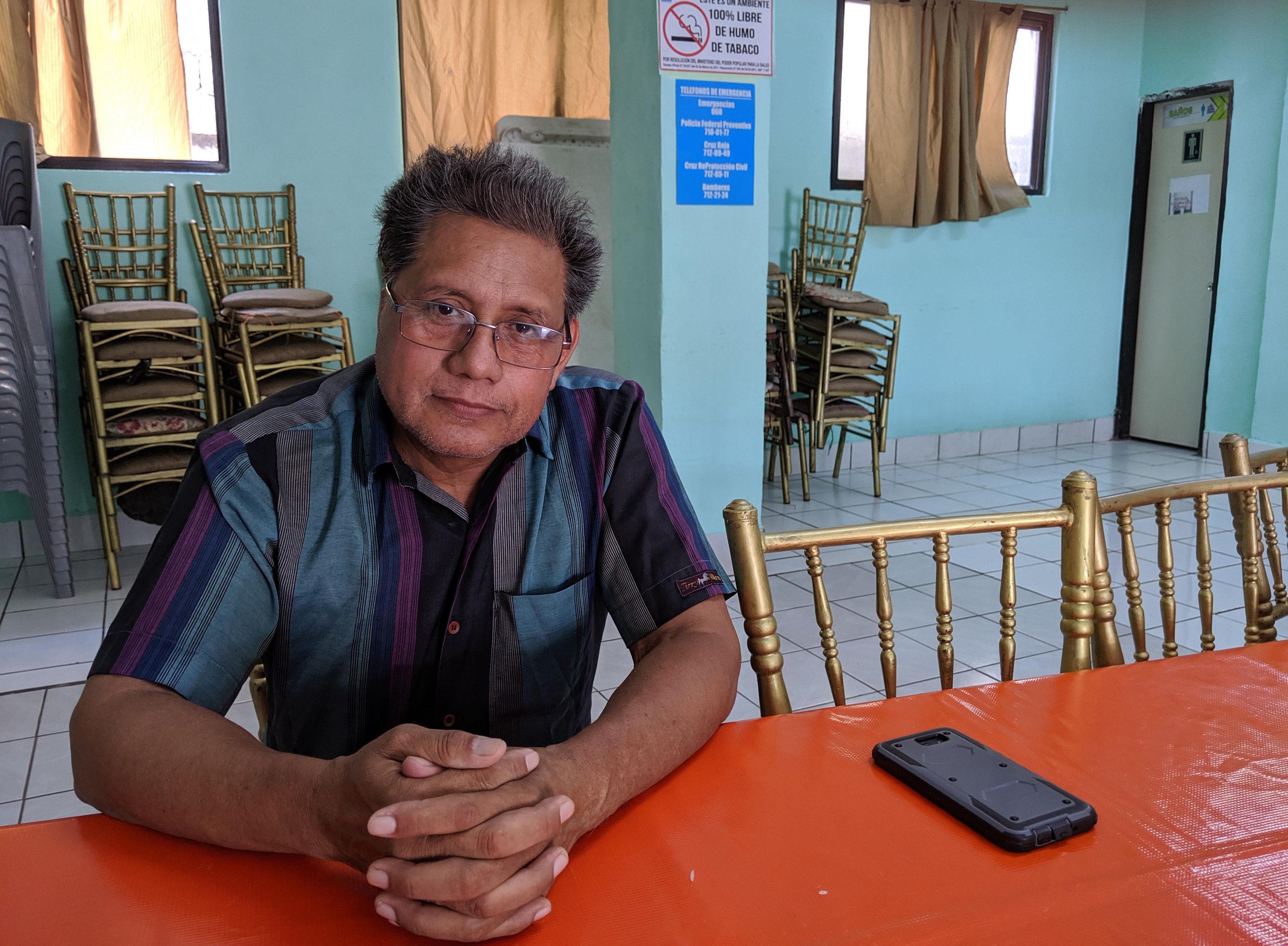
When I later stopped by a local migrant shelter where roughly 170 asylum-seekers are waiting to apply for asylum at the bridge, the dangers manifested. Recognizing me as a journalist, a Ukrainian man with a long red beard approached me and explained in halting English that he’d been kidnapped and beaten about a week prior. He gestured to bad scrapes on his knees and forehead, and urged me to publicize the violence. At the same time, a young Dominican appeared to say his traveling companions had been kidnapped, and he had to come up with $1,500 to free them. (Nuevo Laredo has six shelters, but they aren’t generally accepting those returned under MPP due to capacity issues, the shelter’s director told me.)
MPP is perhaps most bitter for those who already spent months waiting in Nuevo Laredo’s shelters or in other border towns. These migrants—Cubans prominent among them—respected the metering process, which critics consider an arbitrary form of stonewalling, preferring to follow the letter of the law. Had they illegally braved the river a month ago, they would have avoided the new policy, but now, they’ll have to idle even longer. Alejandra, a 36-year-old Cuban, explained the special frustration. “We’ve been waiting here correctly, patiently; I thought that’s what they demanded of us,” she said. “But now they’re punishing us.”
It’s possible that all these seeming dysfunctions—castigating some migrants for following the rules; handing out unwinnable court appointments at ungodly hours; lumping together bona fide asylum-seekers and economic migrants—aren’t bugs in the system at all, but essential features. Aaron Reichlin-Melnick, a policy analyst for the American Immigration Council, recently argued that MPP is designed to break the asylum system through non-functioning bureaucracy, dubbing the policy “weaponized Kafka.” As he put it: “The goal of MPP is to create a system which fools casual observers into thinking a process exists—while making success near-impossible and harm so pervasive that sensible people give up.”
As if to confirm the hypothesis, NBC reported Monday evening an internal email in which an unnamed National Security Council official engaged in a bit of mask-slippage. “My mantra has persistently been presenting aliens with multiple unsolvable dilemmas” in order to deter them from coming at all, the official wrote.
READ MORE:
- In Matamoros, Asylum-Seekers Wait, and Wait and Wait: Refugees stranded across the border from Brownsville endure interminable delays, leading some to brave the Rio Grande.
- Doctor Details ‘Insane,’ ‘Demoralizing’ Conditions for Kids at Texas Migrant Detention Center: A pediatrician talks to the Observer about her recent visit to a South Texas detention facility.
- Shelter Director Ruben Garcia on How Struggling Nonprofits Carry the Load of the Migrant ‘Crisis’: The director of El Paso’s Annunciation House has brought compassion to the front lines of migration for four decades.

